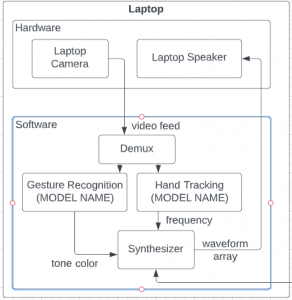- What did you personally accomplish this week on the project? Give files or
photos that demonstrate your progress.
Personally I did not accomplish a lot this week. This week I looked at tutorials on how to develop an app on different OS, and how to set up an interactive webstie that stores user input with cookies. I also created a list of backup models for our recognition function in case our first choices does not work as intended.
- Is your progress on schedule or behind? If you are behind, what actions will be
taken to catch up to the project schedule.
I think I am very behind schedule this week because of personal health issues. In order to make up for the time missed this week I will be spending the entire weekend this week and next week working on capstone related topics 🙂
- What deliverables do you hope to complete in the next week?
Next week I hope to get the interactive app/website setup so we can pick a gesture from an existing list and link it to a sound defined by pitch in hz / and pick a tilt angle from an existing list and link it to a specific volume level in db. Currently it will not support the part about actually producing the sound, but it should be able to allow gesture mapping and selection, and will save the selected results when the app/website opens next time.
- ECE courses (if any) that covered the engineering science and mathematics principles your team used to develop your design
Not really? Most of the basic engineering design concepts I get are from my CEE course in year 1 and my ECE coverage course 17313. Also in the following weeks our group have searched up these terms on google.

